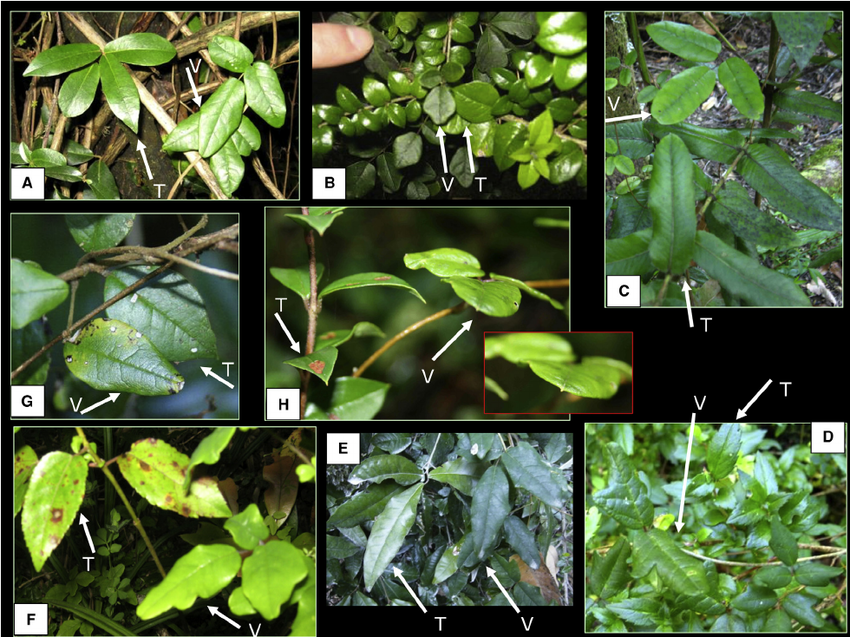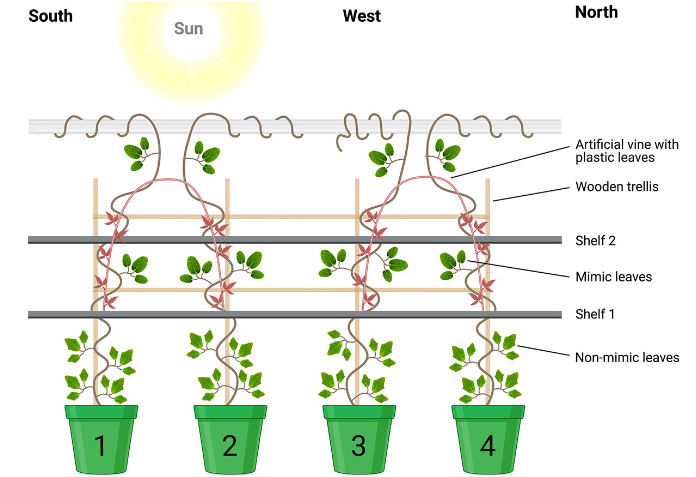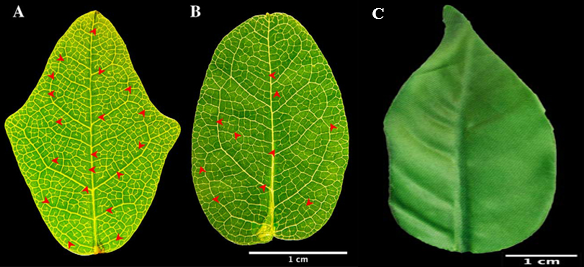Scientists have long considered plants to be living multicellular organisms that notably do not have eyes. Boquila trifoliolata is challenging that idea.
When you picture the floor of a jungle, you likely envision a dense sea of overcrowded green plants, climbing the tree trunks and reaching towards the sun. Access to sunlight is critical for the survival of most plants. They must be able to both identify where light is coming from and grow towards it in a process called phototropism. Light is sensed using cellular components known as photoreceptors which are made up of chromophores, or small proteins that undergo a physical change under light. This change in the protein triggers a response in plants, allowing them to seek out sunlight to outcompete the others nearby and flourish even in this cramped environment.
Although scientists understand how plants detect sunlight, the Boquila trifoliolata exhibits an unusual visual sensitivity never seen before in plants: it can alter the shape, size, and color of its leaves to look more like the leaves of other plants growing nearby. This mimicry helps to camouflage the plant and decrease the odds that it will be consumed by a lurking herbivore. Scientists have tried to determine how the plant decides what changes to make to its leaf appearance to blend in, speculating that the surrounding plants might release some sort of chemical that Boquila trifoliolata can detect and interpret to alter its appearance. This might sound outlandish, but previous research has revealed that some plants do indeed use chemicals to communicate with one another, resulting in changes that include increasing defense towards herbivores. However, this had never been linked to a change in color, shape, or size of leaves. It was also hypothesized that genetic material might be transferred from the nearby plant to Boquila trifoliolata, which could then use the new genes to change its appearance.

More recently, researchers recognized that by growing Boquila trifoliolata alongside an artificial plant, they could eliminate any biological factors that contribute to the change of leaf shape. They developed a structure (seen in Figure 2) to test their hypothesis, allowing the vines to grow into new and unfamiliar spaces as they would in their natural environment. If the leaves changed shape, it would mean that Boquila trifoliolata was using something similar to vision to sense the appearance of other plants.

To the surprise of many plant experts, the leaves that grew upwards into the shelves that contained the artificial plant varied in appearance from the initial isolated leaves. These mimic leaves had transformed into a new shape that was similar to those of the artificial plant, without needing any response from a living plant as many scientists had presumed (Figure 3).

The researchers of the artificial plant study propose that vision may be possible using the ‘ocelli’ hypothesis: the outermost cells may have a curved lens-like structure, allowing the plant to observe their surroundings in a way similar to the human eye which then informs their leaf mimicry. More follow up studies were suggested by the authors of the artificial plant research and it will be a while before we can say for sure how this plant perceives its surroundings, much less changes its physical shape. This discovery opens new possibilities about how plants are perceiving their surroundings. Although it doesn’t seem likely that plants have secretly had “eyes” in the ways humans or other animals do, Boquila trifoliolata is certainly more visually aware of its environment than we ever believed possible for a plant.
Peer Editor: Keeley Spiess